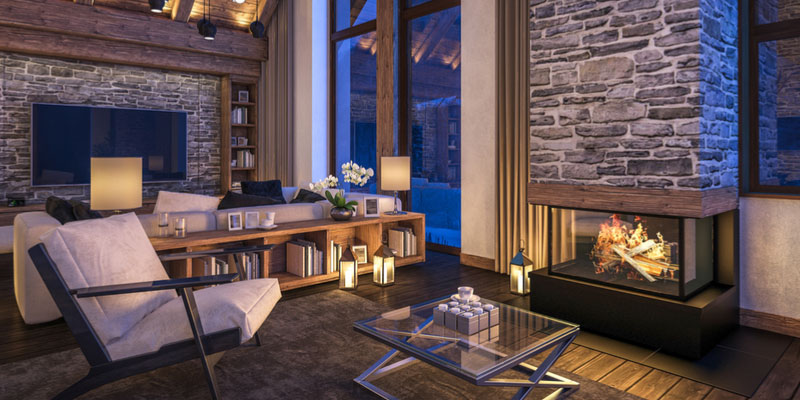There are several things you should do each year to prepare your brick chimney and fireplace for the cold of winter. By properly preparing your brick chimney and fireplace, you can reduce your risk for a chimney fire as well as toxic fumes entering your home. Plus, you can improve the overall effectiveness of your fireplace.
5 Ways to Prepare Your Chimney & Fireplace
Perhaps it’s been a while since you’ve turned on your wood burning fireplace, but as soon as the cold chill of fall hits, you start thinking about it again. Before using your brick fireplace this winter, here are a few things you can do to help ensure your safety.
#1. Have Your Chimney & Fireplace Cleaned
It is recommended to have your chimney and fireplace cleaned and inspected once a year. The best time to have this done is right before fall or winter sets in. Thinking about cleaning it yourself DIY-style? It’s not a project for the faint of heart. It’s a messy project best left to the professionals.
#2. Check for Animal Nests
Throughout spring and summer, a number of animals may have made a home out of your roof or chimney. Nests can block the flue, trapping gasses and smoke inside of your home. Furthermore, animals and their nests can harm your chimney cap or crown. So, not only is it important to remove nests, it’s also equally important to check that all parts of your chimney are still intact and working.
#3. Check Draft
Have someone stand outside of your home with their eyes on your chimney. At the same time, light up a small roll of newspapers in the fireplace. (Side note: for normal intents and purposes you should never light anything but firewood in your fireplace). Don’t forget to make sure the fireplace damper is in the open position. The goal is to see if the smoke from this little fire makes its way up and out of the chimney flue. Hence, why you want someone standing outside looking for signs of smoke coming out through the chimney. If the smoke doesn’t come out the top, that means it’s getting stuck somewhere along the way.
You’ll need to have a professional out to check for and remove any obstructions. Otherwise, toxic gases and fumes could end up back inside of your home, harming you and your family.
#4. Check Brick Work
Inspect the outside of your chimney. Look for gaps, holes, or spalling brickwork. Bricks should be in place and mortar should be solid—not crumbly or soft to the touch. Crumbly mortar or spalling bricks indicate issues with the chimney that must be addressed to preserve its integrity. Once brick or mortar starts falling out of place, it’s a sign that water damage, or some type of damage, is impacting the structure.
It’s also important to check brickwork on the inside of your fireplace box. Open mortar joints must be fixed right away. Otherwise, fire can move into the stud wall located behind your masonry firebrick. Thus, potentially causing a serious house fire.
#5. Make Sure Your Chimney Isn’t Leaking Air
The chimney is a common source of heat loss—and that means wasted money when your heater is running. You want to avoid letting cold air in and hot air out. Therefore, have your chimney inspected to make sure it’s not leaking air.
Protect Your Home & Chimney All Winter Long
By following the above tips, you can get the most out of our brick chimney this winter, all while protecting the safety of your home and family. Turnbull Masonry is here to help with all your brickwork needs, 365 days a year. Contact us today with questions, concerns, or to simply book an appointment.

